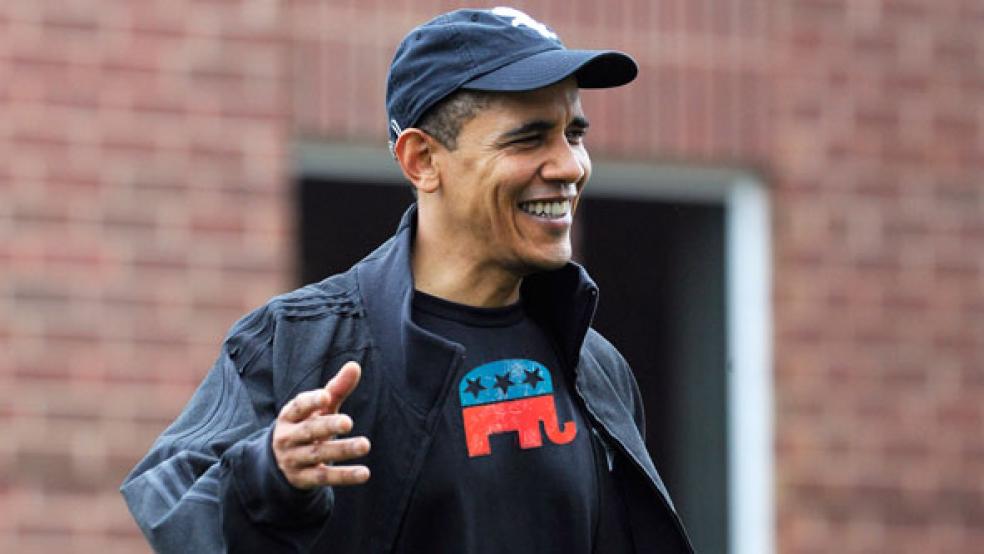Many on the left are puzzled by Barack Obama’s apparent willingness to support dramatic reductions in federal social spending. It is only because Republicans demand even more radical cuts in spending that Obama’s fiscal conservatism is invisible to the general public. But those on the political left know it and are scared.
Yesterday, left-leaning law professor Neil Buchanan penned a scathing attack on Obama for abandoning the Democratic Party’s long-held policies toward the poor, and for astonishing naiveté in negotiating with Republicans. Said Buchanan:
“The bottom line is that President Obama has already revealed himself to be unchanged by the election and by the last two years of stonewalling by the Republicans. He still appears to believe, at best, in a milder version of orthodox Republican fiscal conservatism – an approach that would be a fitting starting position for a right-wing politician in negotiations with an actual Democrat. Moreover, he still seems to believe that the Republicans are willing to negotiate in good faith.”
Others on the left, such as New York Times columnist Paul Krugman, former Secretary of Labor Robert Reich and others raise similar concerns. They cannot understand why Obama, having won two elections in a row with better than 50 percent of the vote – something accomplished only by presidents Dwight Eisenhower and Ronald Reagan in the postwar era – and holding a powerful advantage due to the fiscal cliff, would seemingly appear willing to gut social spending while asking for only a very modest contribution in terms of taxes from the wealthy.
The dirty secret is that Obama simply isn’t very liberal, nor is the Democratic Party any more. Certainly, the center of the party today is far to the right of where it was before 1992, when Bill Clinton was elected with a mission to move the party toward the right. It was widely believed by Democratic insiders that the nation had moved to the right during the Reagan era and that the Democratic Party had to do so as well or risk permanent loss of the White House.
It is only the blind hatred Republicans had for Clinton that prevented them from seeing that he governed as a moderate conservative – balancing the budget, cutting the capital gains tax, promoting free trade, and abolishing welfare, among other things. And it is only because the political spectrum has shifted to the right that Republicans cannot see to what extent Obama and his party are walking in Clinton’s footsteps.
One of the few national reporters who has made this point is the National Journal’s Major Garrett. In a December 13 column, he detailed the rightward drift of the Democratic Party on tax policy over the last 30 years.
“In ways inconceivable to Republicans of the 1970s, 1980s, and 1990s, Democrats have embraced almost all of their economic arguments about tax cuts. Back then, sizable swaths of the Democratic Party sought to protect higher tax rates for all. Many opposed President Reagan's 1981 across-the-board tax cuts and the indexing of tax brackets for inflation. Many were skeptical of Reagan's 1986 tax reform that consolidated 15 tax brackets into three and lowered the top marginal rate from 50 percent to 28 percent (with a "bubble rate" of 33 percent for some taxpayers). They despised the expanded child tax credit and marriage-penalty relief called for under the GOP's Contract With America.
“Now all of that is embedded in Democratic economic theory and political strategy. The only taxes that the most progressive Democratic president since Lyndon Johnson wants to raise are those affecting couples earning more than $267,600 and individuals earning more than $213,600 (these are the 2013 indexed amounts from President Obama's 2009 proposal of $250,000 for couples and $200,000 for individuals). Yes, some of this increase would hit some small businesses. But that can be finessed.”
I think that a lot of the Democratic Party’s rightward drift resulted from two factors. First is the continuing decline of organized labor from 24 percent of the labor force in 1973 to less than half that percentage in 2011. And the decline among private sector workers has been even more severe.
When the AFL-CIO was strong, it looked out for the working class as a whole. Its leadership understood that improving the pay and benefits of all workers was ultimately to the benefits of unionized workers. Labor support was critical to the passage of every important piece of social welfare legislation since the 1930s. Hence the decline of unionization has deprived liberals of their most important ally.
Secondly, the collapse of the Soviet Union essentially led to the collapse of support for socialism worldwide. I think voters bought the idea that the economist F.A. Hayek made during World War II that socialism impoverishes people and necessarily becomes totalitarian eventually. The disappearance of socialism as a viable political philosophy deprived liberals of their ideological anchor, causing liberalism itself to drift rightward with the tide.
There are other factors as well, such as the dependence of Democrats on campaign contributions from Wall Street, but I think these are the most important. But whatever the reason, the result is that the nation no longer has a party of the left, but one of the center-right that is akin to what were liberal Republicans in the past – there is no longer any such thing as a liberal Republican – and a party of the far right.






